


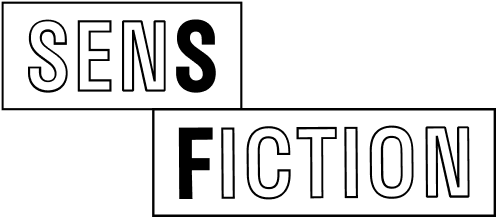
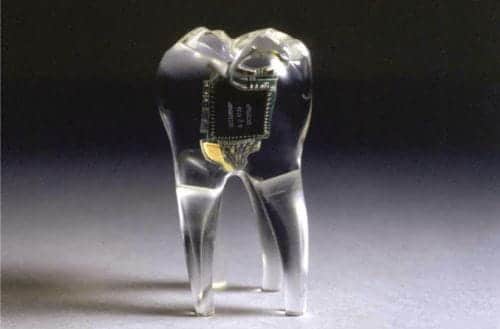
Part of the venerable tradition of fictions generated by designers, notably the Italian radicals, the 1990s saw the emergence of a designer and artist movement that used fiction to create speculative objects and potential future scenarios. Critical design is a way to move the focus back to all the freedoms the future can offer. Its key concept is that of embodying possible shifts, whether technological or societal, through objects and systems, much as is done in science-fiction films. It’s not about identifying a specific application based on a certain technology or material, but, rather, about questioning a new form of behavior and understanding the consequences that some technological innovations may have on habits and practices.
Mind Expanders I and II, made in the late 60’s, by architectural group Haus-Rucker-Co, are a couple of performative-architectural sculptures allowing two enclosed bodies to entwine within them – facilitating a conjoined, altered state of psychedelic comm(union).
zamp-kelp.com
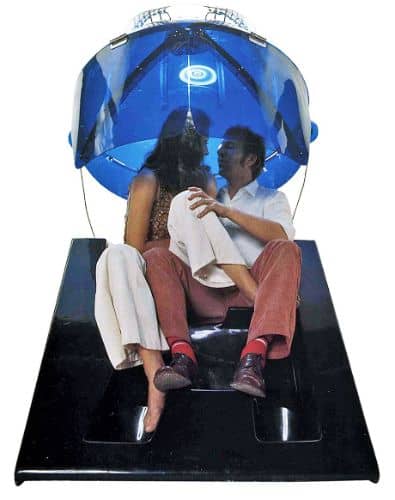
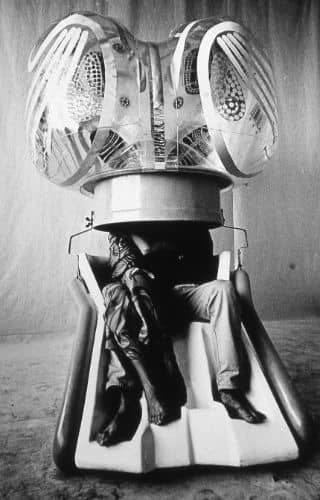
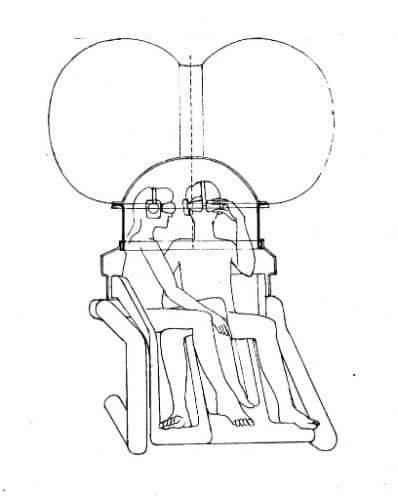
ART AT THE BIOBOTIC FRONTIER
A-positive, a dialogical event created by Ed Bennett and Eduardo Kac, probes the delicate relationship between the human body and emerging new breeds of hybrid machines that incorporate biological elements and from these elements extract sensorial or metabolic functions.
The work creates a situation in which a human being and a robot have direct physical contact via an intravenous needle connected to clear tubing and feed one another in a mutually nourishing relationship. This work proposes that emerging forms of human/machine interface penetrate the sacred boundaries of the flesh, with profound cultural and philosophical implications.
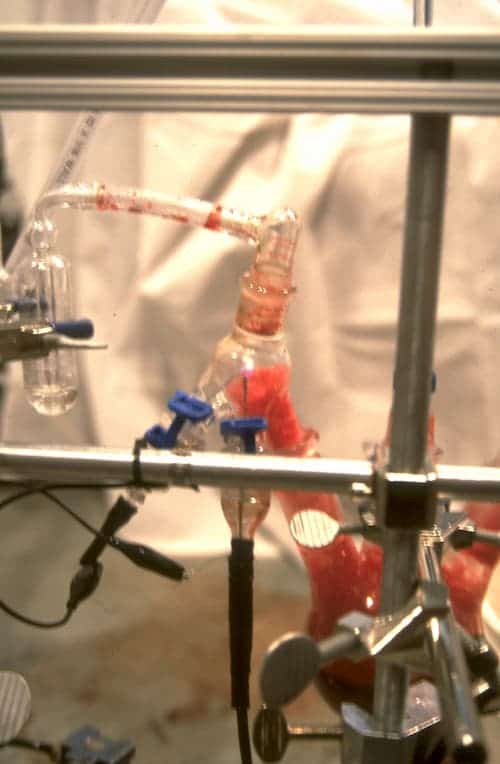

Each season has its own colors, smells and waste. Summer hay, fall leaves, all of which can be used for non-durable furniture. Extrusion containers press garden waste into endless benches that can be shortened to any length. It's up to nature to decide when it will claim them.
studiomakkinkbey.nl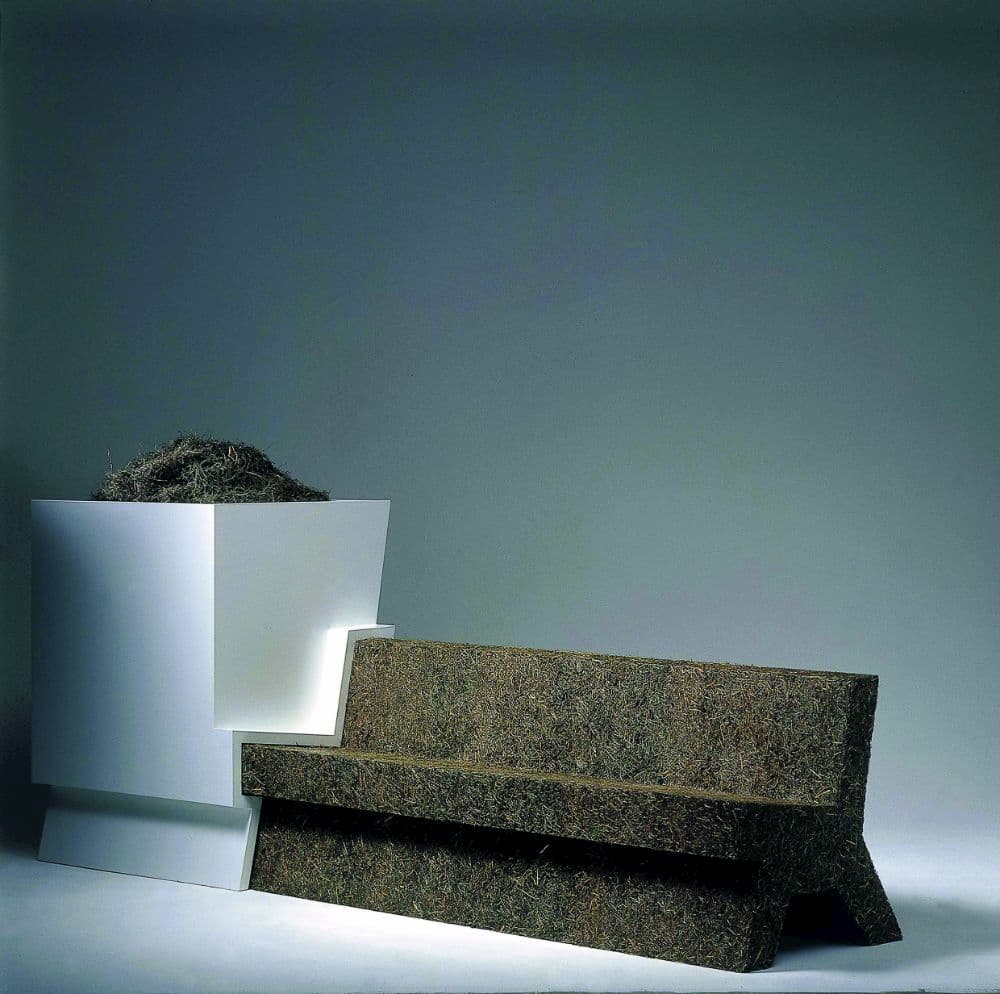
Pig City proposes a radical ‘shake-up’ of pig farming in The Netherlands, following EU guidelines for organic farming and taking in account the deficiencies in the present system, MVRDV designed an organic pig farm. This proposal ensures that the conditions in which pigs are kept is humane. Livestock are given more space, kept in groups of natural size. A fictional farming design project for animal welfare?
mvrdv.nlThe Audio Tooth Implant is a miniature audio output device and receiver implanted into the tooth during routine dental surgery. These offer a form of electronic telepathy.
This project is a conceptual proposition intended to encourage discourse and comment on the possibilities of in-body biotechnology and it's potential impact on society and culture. After the implant went public, articles were printed in the international press.
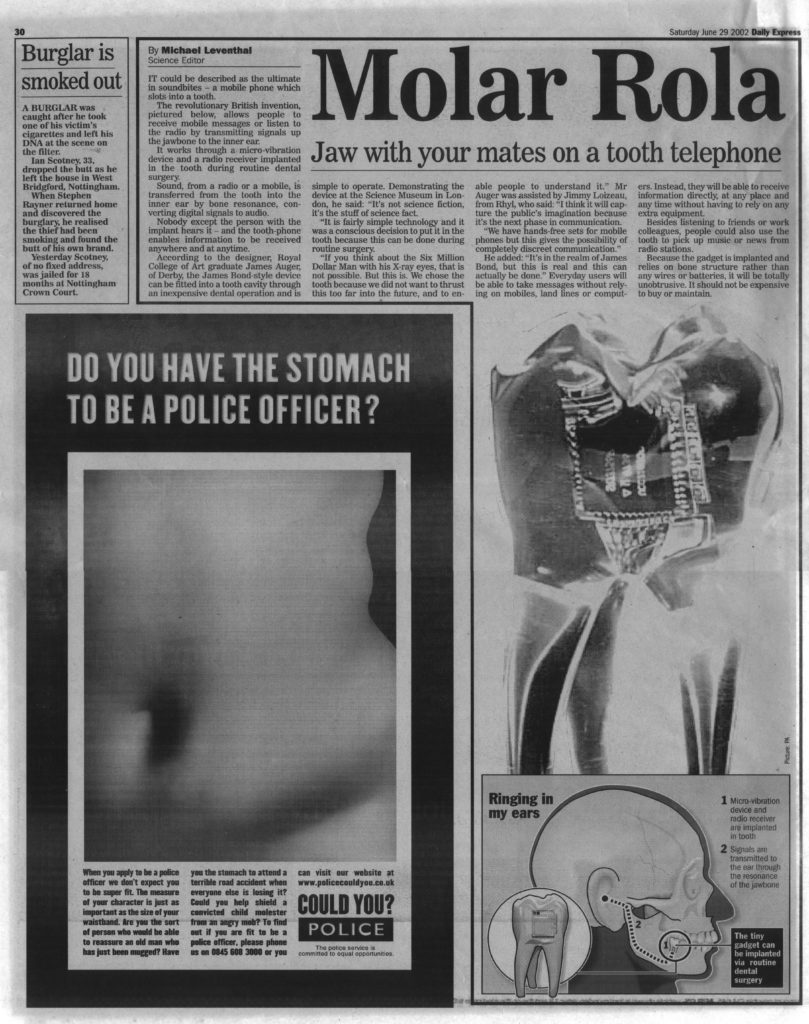
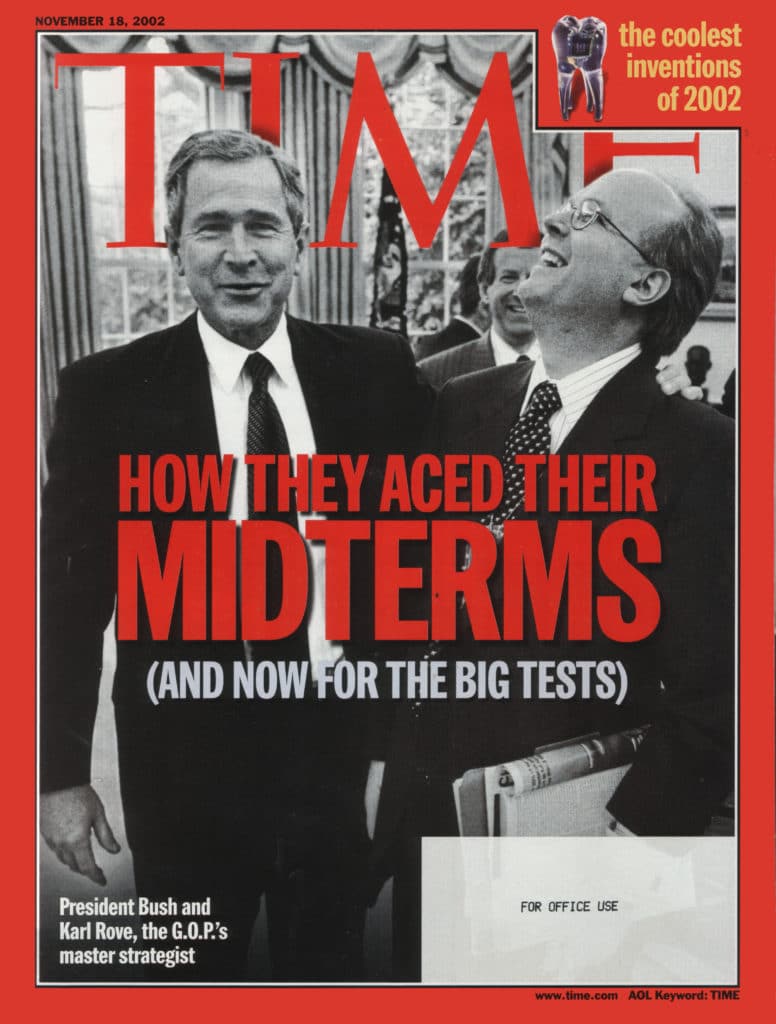
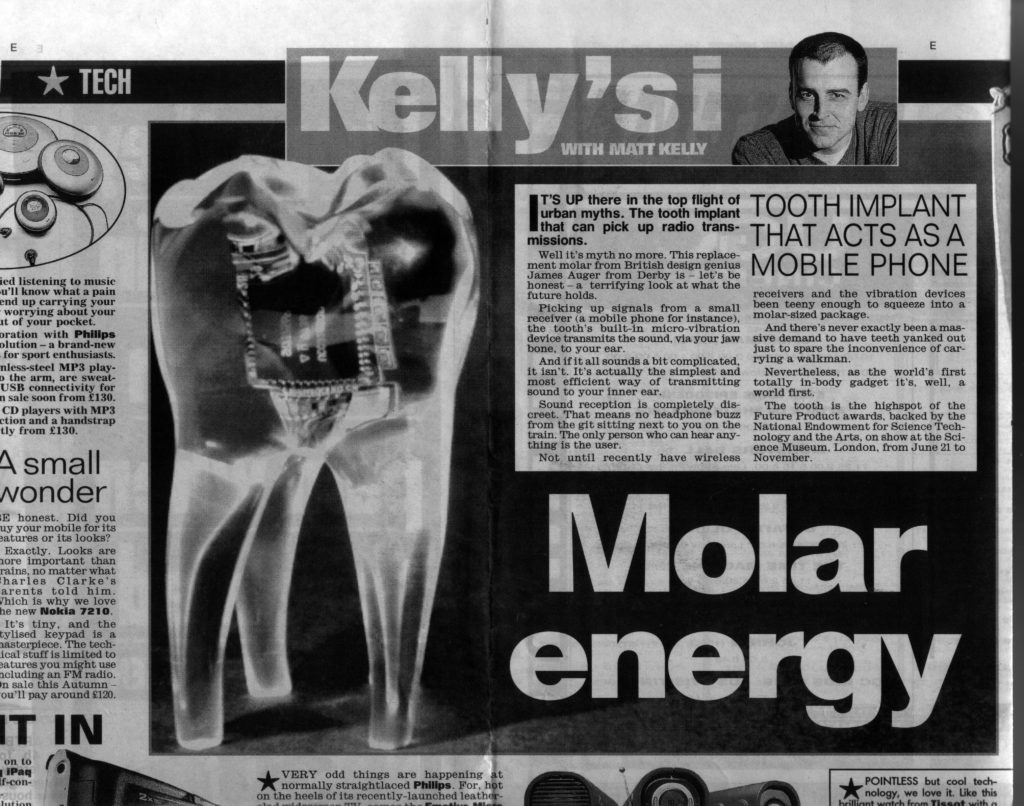
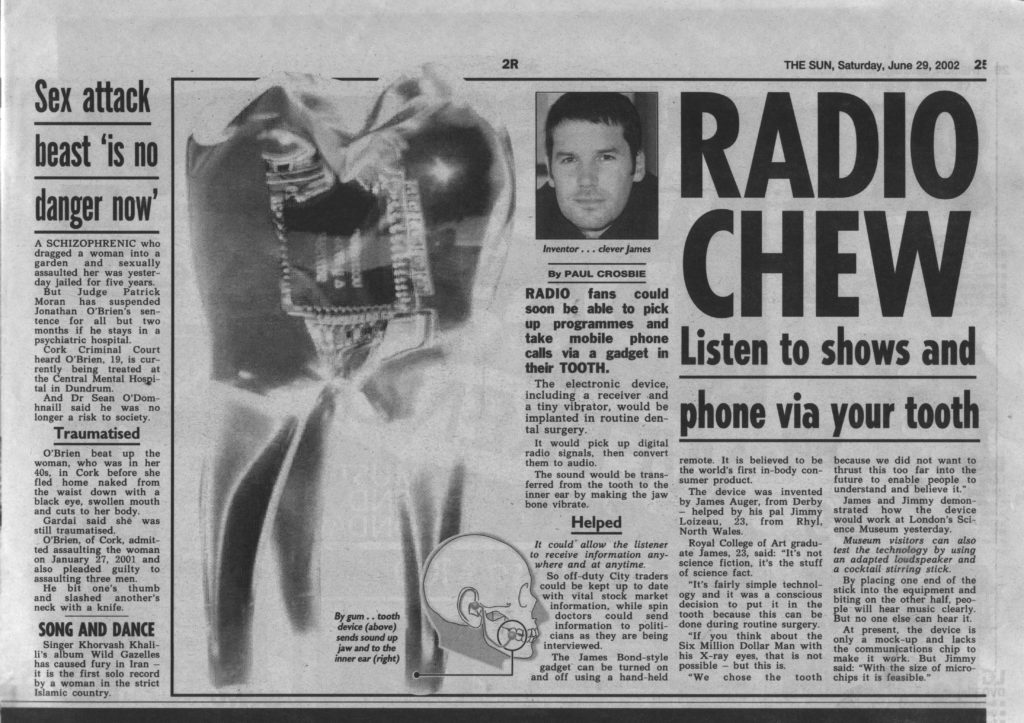
This project imagines a world where some of man‘s technology has been developed for animals, tending to some of their specific needs. The concepts fit into three categories.
1. Survival: technology to overcome evolution's deficiencies.
2. Traumas of domestication: mitigating the frustrations triggered by an artificial environment.
3. Status enhancement: a new role for parasites.
Phase one of this project (2001) was the small book published as a limited edition of 1000 copies. In 2007, several of the concepts were build as semi-operational prototypes and exhibited at the 'BÊTES DE STYLE' exhibition, MUDAC, Lausanne, Switzerland.

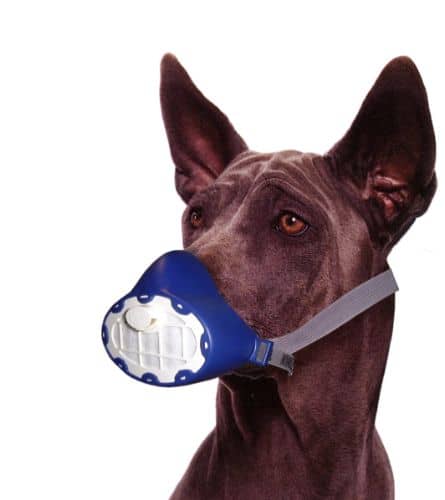

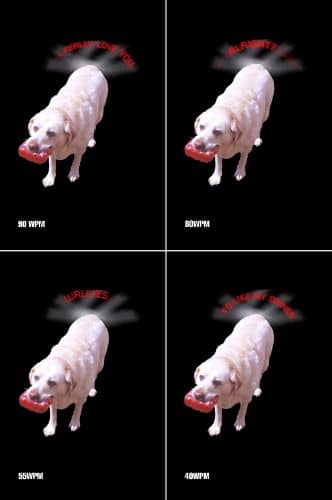
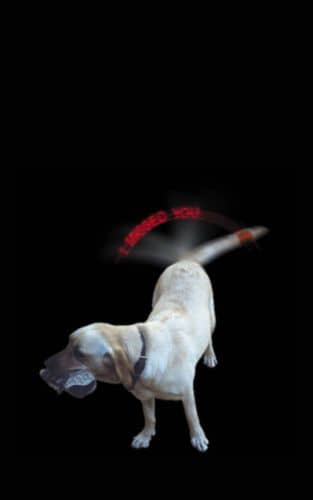

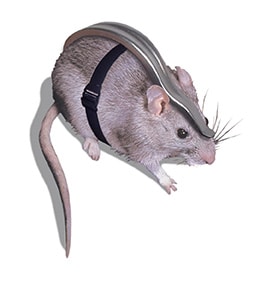
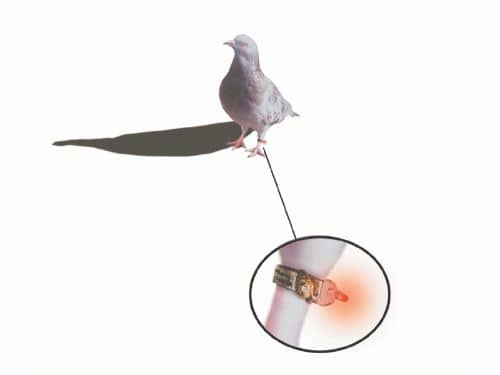
Utility Pets is an experimental project that uses products to draw attention to the ethical consequences of xenotransplantation - the transplantation of animal organs into humans.
In an imaginary, though not so-distant future, shortly after birth, people will be given a piglet with their own DNA engineered into it. The pig, known as a knockout pig in the scientific jargon, is a form of living insurance policy - an organ bank.
This project explores what kind of new objects might be needed if the pig lives in the home with its owner's family.
The Utility Pet products include:
1. A pig toy with a microphone and a radio handset allowing the owner to listen to the pig enjoying itself.
2. A smoke-filtering device allowing a person to smoke in front of the pig without it suffering the consequences of passive smoking.
3. A low-resolution TV exclusively for pigs, which they can control themselves.
4. A comforter - a psychological product made from the snout of a pig, which helps people come to terms with the contradictory feelings generated by this complex situation.
The Slow Car speculates on how we create workplaces. It suggests a new, city-wide mobility that becomes productive time. The design clearly devoid of aerodynamism, the car looks more like a small building, a very fast office chair or a slow car.
studiomakkinkbey.nl
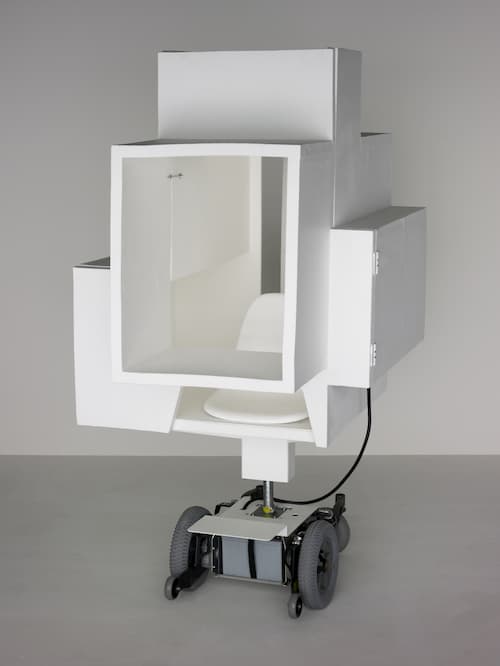
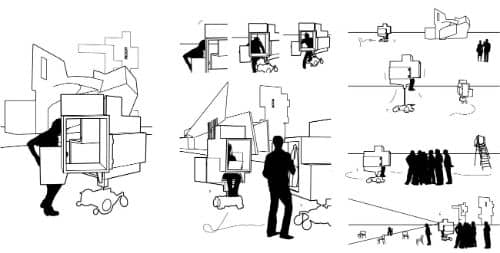
The project explores our relationship to death and proposes to take advantage of the energy potential of bodies after biological death: a microbial fuel cell. Here, the technology paves the way for a second life after death, with life being contained in the battery.
auger-loizeau.com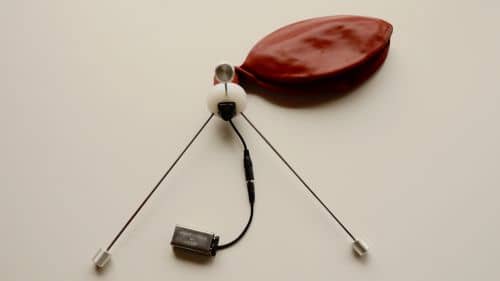



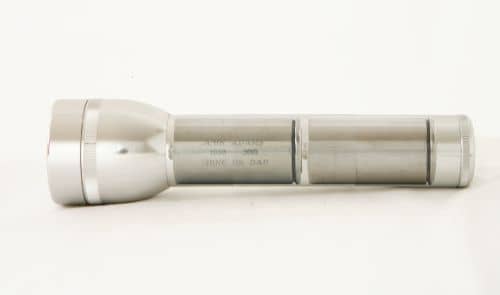
"Benoît injects me with horse-blood serum, and then I stay lying down to be sure that there's no anaphylactic shock. Meanwhile, a film is projected for the public who is attending the performance. Then, I slip on this pair of prostheses so I can go around the room several times with the horse, and finally, I go lie down again.
Indeed, the timing is synchronized so that, twenty minutes later, we take my blood right when the human antigen markers that show the presence of a equine foreign body within me are at their highest level. This blood will then be freeze-dried right in front of the audience to create a sort of amulet or fetish item that will be found in these metallic boxes that are a bit like reliquaries, within which you thus have (as strange as it may seem) 'centaur' blood, in other words, blood right at the moment of a mixing between the two species, but freeze-dried, and so, in a powdered form."
What consequences will these increasing cognitive symbioses between humans and digital systems have?
The devices and films proposed in these projects explore how information technology not only provides possibilities and knowledge, but also carries a psychoactive effect that leads to unforeseen changes in human interactions and self-conceptions.
Three objects are briefly presented: DROMOLUX, OPTOCOUPLER and INTROSPECTRE. They have been realised as functional prototypes and been illustrated in short video scenarios.
"I wanna deliver a shark" and "I wanna deliver a Dolphin" imagine a point in the future where humans will help this species by the advanced technology of synthetic biology.
A ‘dolph-human placenta’ that allows a human female to deliver a dolphin or a shark is created, and thus humans can become a surrogate mother to endangered species.
Furthermore, gourmets would be able to enjoy the luxury of eating a rare animal: an animal made by their own body, raising questions of the ownership of rare animal life, and of life itself.
This sculpture is an empathy tool for training in human relationships with humanoid robots and artificial intelligence.
This responsive robotic head reacts to negative stimuli and manipulates and measures the viewer’s emotional arousal. The robot is programmed to respond at different levels of intensity based on the person’s actions towards it. If someone raises their voice to the robot, it will frown, if they shout, it will cry, and if they scream, it will suffer a nose haemorrhage.
This piece takes reference from the famous Shakespeare monologue from the Merchant of Venice in which the protagonist proclaims that all people no matter the race or religion should be considered equal as they share the same bodily materials and processes, they are human. In the race to generate robotic likenesses indistinguishable from humans, this project asks us that if a robot shares human materials and processes, should they have the same rights and legal status as human beings?
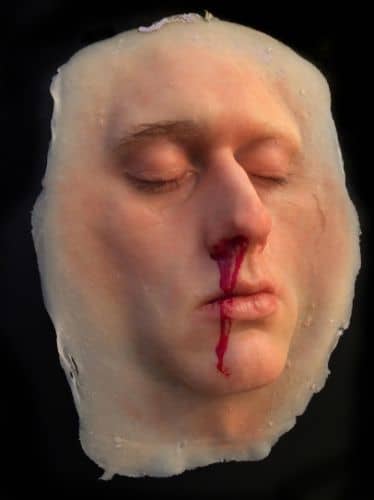
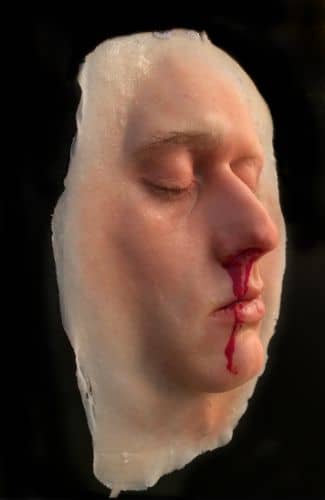
What Shall We Do Next? (Sequence #3) is a performance undertaken with 4 dancers and composed of several modules presented independently or in an alternating fashion with the film What Shall We Do Next? (Sequence #2).
Module 1: this module is an extension of the archive of "trademarked" movements and updates it by presenting the very latest trademarked movements.
Module 2: this module reviews a renowned process that included choreographer Martha Graham. Because she had become an employee of her own company in her younger years, this choreographer was the owner of the rights to almost none of the dances she had created. This legal affair became, for this artist, a chance to create a new performance, a meta-dance in which the legal report knocked up against the movements. The dancers describe the major stages in the process and perform a section of the only piece owned by the choreographer herself.
Module 3: this module takes place based on the concept of a short, performed talk. One of the dancers describes the various movements and futuristic interfaces presented in the science-fiction films, while the other dancers execute the aforementioned movements.
Curious Rituals is a project about gestures, postures and digital habits occurring in everyday digital life: the recalibration of a smartphone by doing a horizontal 8 sign with your hand, the swiping of a wallet with RFID cards in public transport, etc.
This speculative survey of the evolution of digital gestures is presented in a book format and a design- fiction film.
The catalog of the near future’s normal ordinary everyday Imagine a print distribution network with cloud-connected street vending/printer boxes.
Overnight, algorithms API-shazam content for those boxes to print. Printed stuff piles up every night in those boxes, including cheap copies of a location-specific, regionally tuned catalog selling stuff for your normal, ordinary everyday life. This is TBD Catalog.
It's an awkward attempt by an awkward business to attract more eyeballs and sell more stuff in a near future where the screen world has become so saturated and overrun that other mediums, like paper and street vending boxes, have become a natural spillover. It's a printed catalog you ritually pick up every morning to browse on your mostly boring, everyday ordinary driverless commute.
You may even look forward to it, the way you look forward today to the free daily commuter news, or the Skymall catalog, or an entertaining bit of junk mail.
'Transfigurations' depicts designs for potential body enhancements that have been surgically implemented.
Each modification is put in place to imagine how these techniques could ‘solve’ a potential future problem for the baby, ranging from medical to environmental to social mobility issues, but at what physical, mental, social and economic cost? This project reveals that modification, particularly of children, is not new, and techniques today may achieve what we believe to only be alterations of the future.
The feedback since the production of these sculptures has shown that decision-making in healthcare, particularly when it involves vulnerable parties, is incredibly complex and sadly, rarely accessible to everyone.
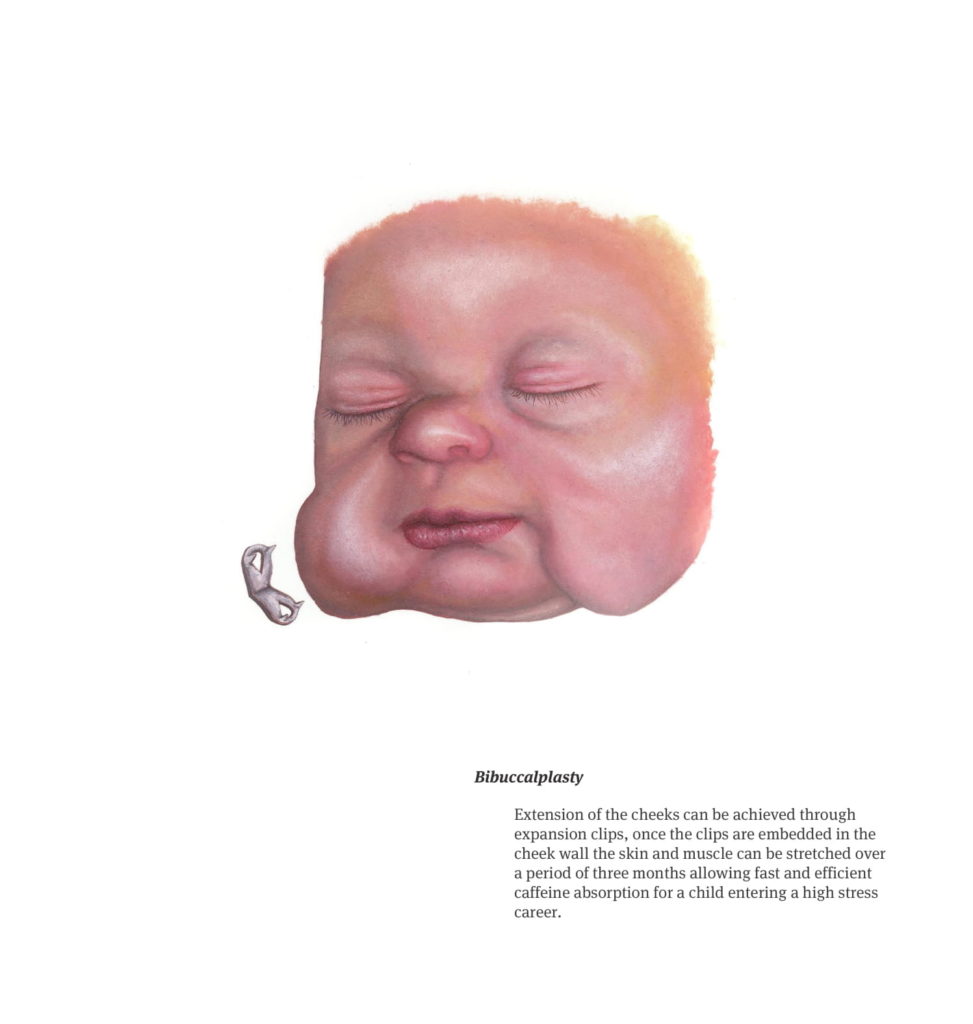
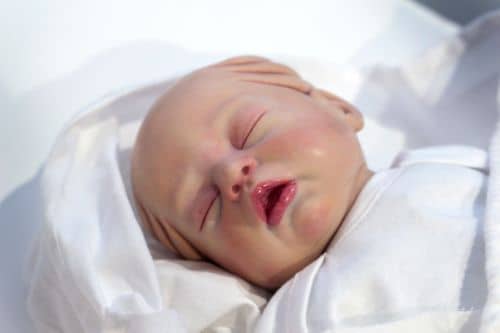
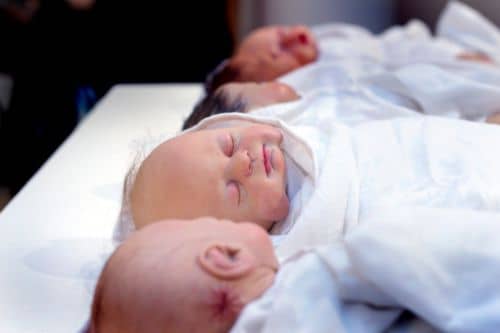
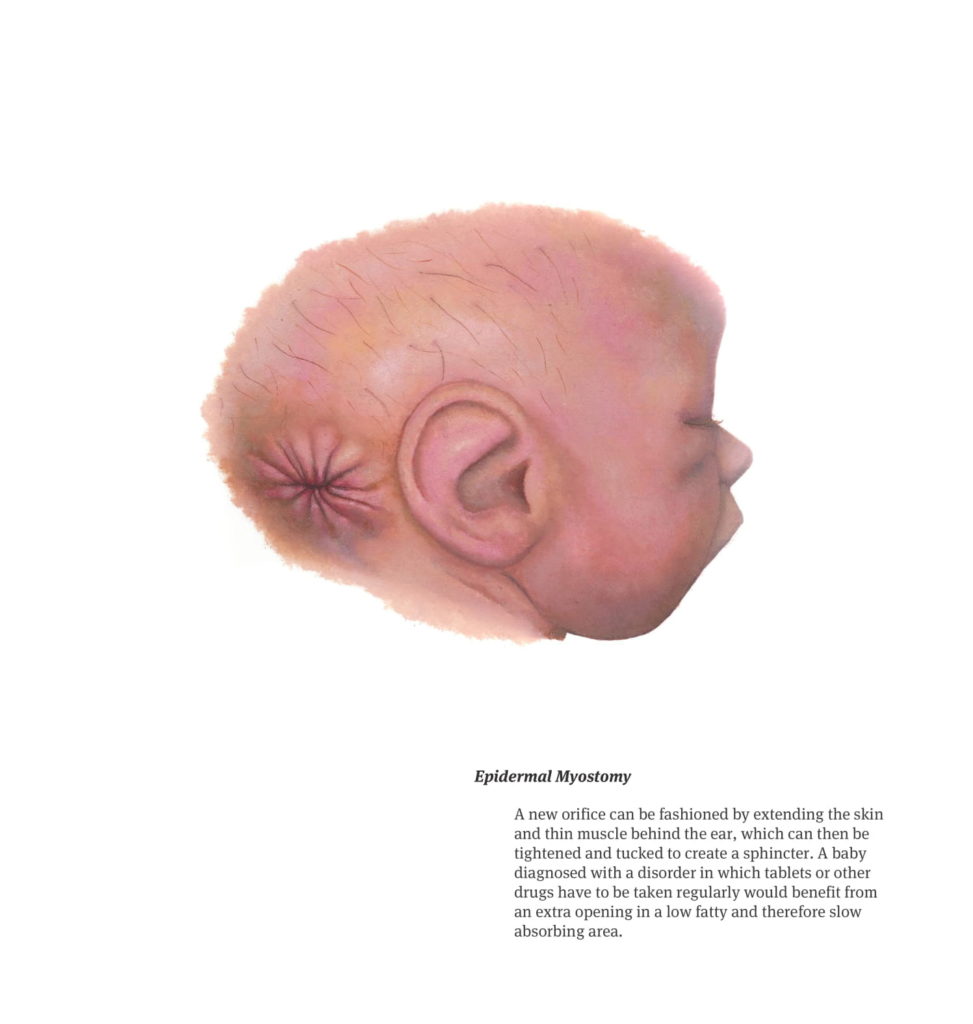
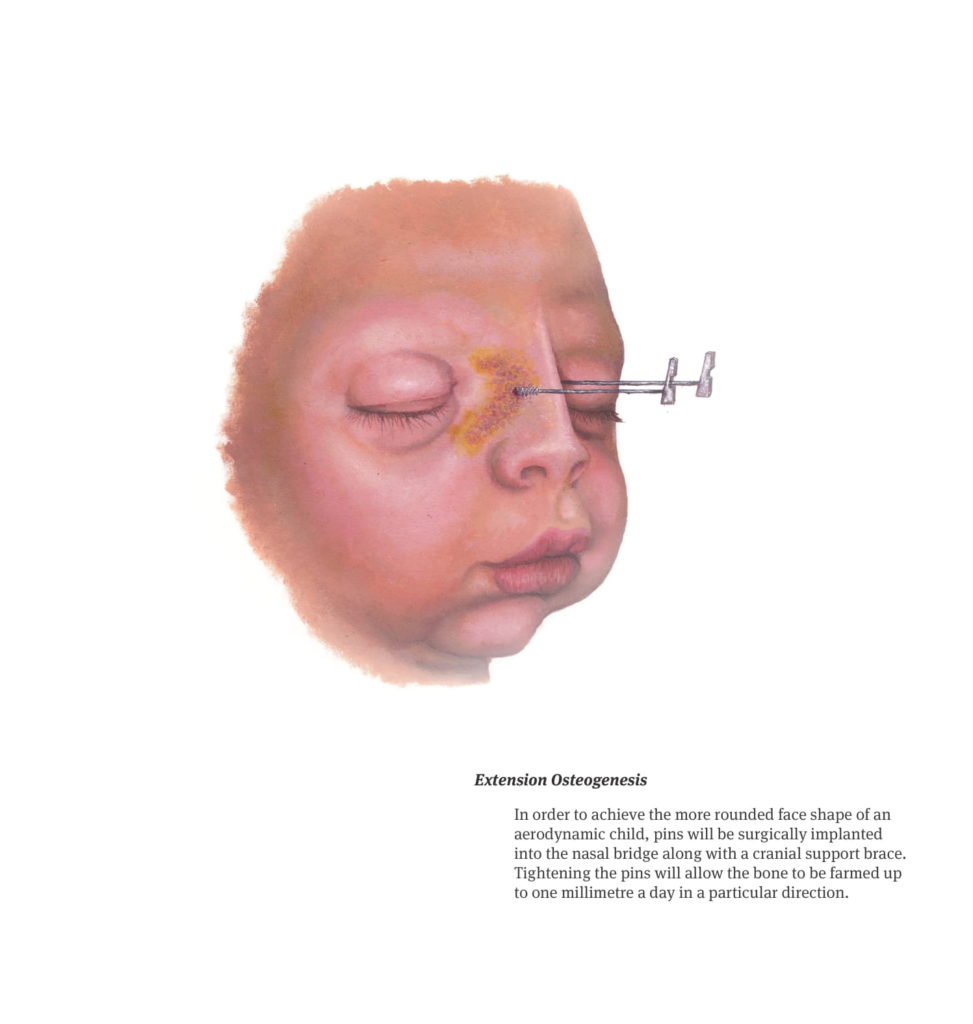
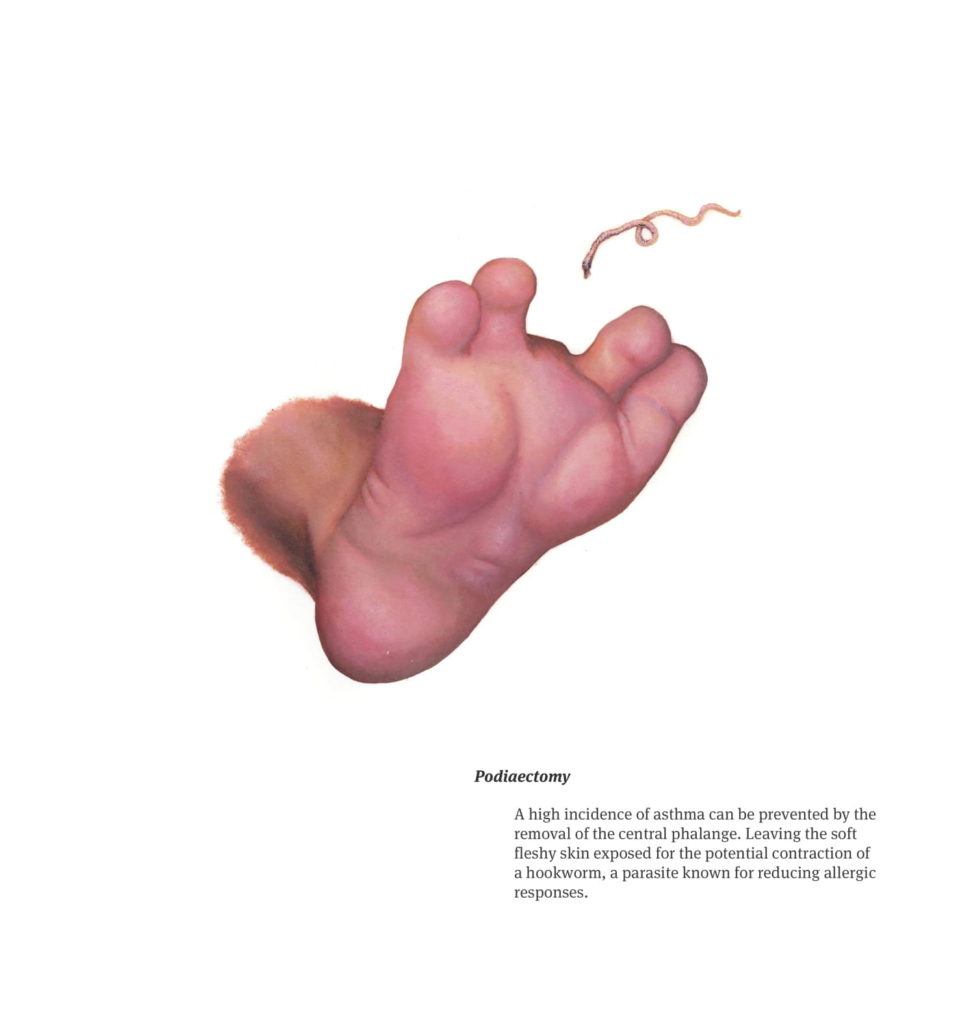

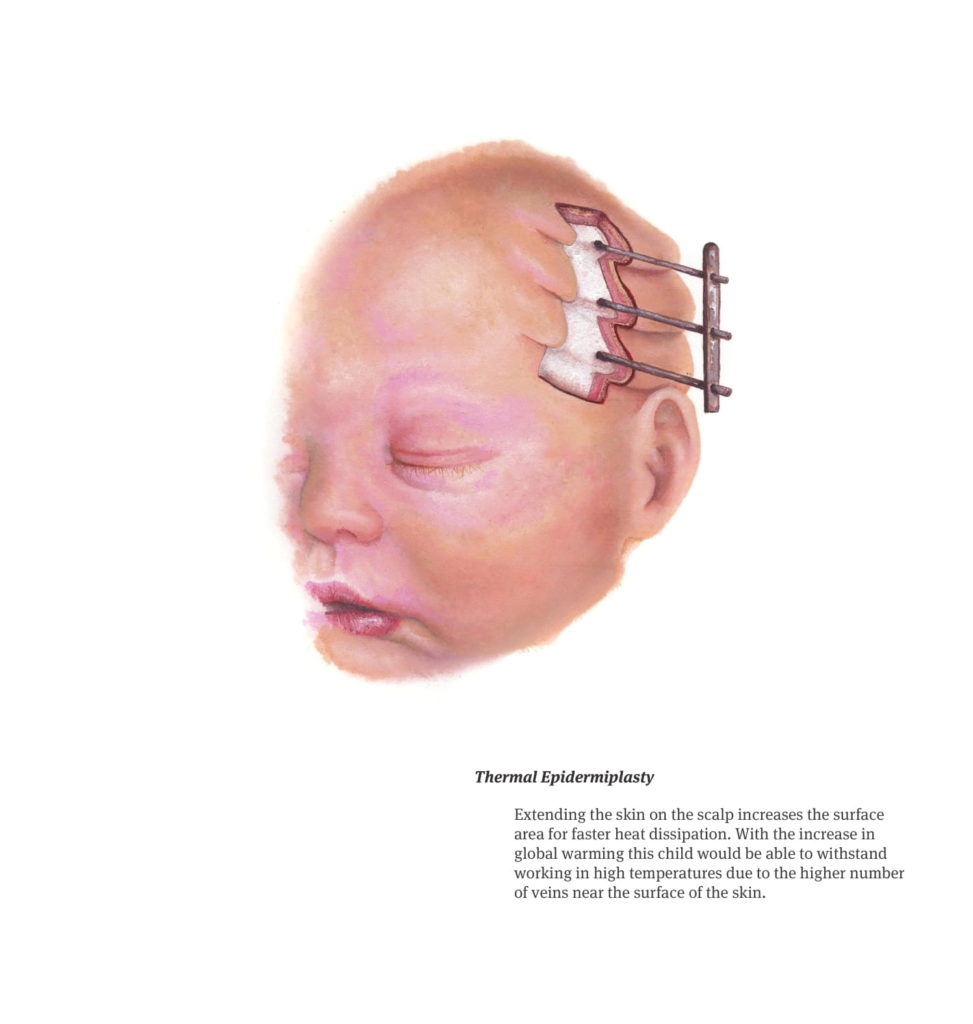
Black Gold is a platform for exploring how advances in synthetic biology could be used to save these endangered species by altering their supply and demand chains.
The creation of an underground synthetic rhino-horn-growing apparatus used by black-market traders and a humane caviar-extraction super-yacht used by the ultra-rich are proposed as new ways to save the black rhino and beluga sturgeon by those who profit most from their survival.
Teacher of Algorithms is a vision of a future job emerging as a byproduct of the spread of learning devices.
Set in the near future, somewhere in the back alleys of Shanghai, the rituals and activities of 'the teacher' unfold. We think about smart/learning objects as yet-unfinished entities that can evolve in their behaviors by observing, reading and interpreting our habits. They train their algorithms based on deep learning or similar ways to constantly adapt and refine their decisions.
Addicted Products is a real fictional service that questions the model of constant ownership and proposes a scenario in which a product can be shared without the active decision of a person, but based on its own needs as a product. However, connectivity changes not only the way we interact with objects but also their meaning in our lives. From tools, they can become agents or companions, with their own behavior, motives, and agency.
simonerebaudengo.comThomas, aged 70, lives on his own after his wife died last year. His children send him smart devices to track and monitor his diet, health and sleep from a distance. But Thomas has always been fiercely independent, happy to live in an organised mess. He struggles with the order and rules imposed on him by the objects that are meant to make his life easier. In a world where ’smart objects’ will increasingly be used to provide care at a distance, how will we live with these uninvited guests?
SuperfluxHyper-Reality is a concept film by Keiichi Matsuda. It presents a provocative and kaleidoscopic new vision of the future, where physical and virtual realities have merged, and the city is saturated in media.
hyper-reality.coOrizon is a fictional service that offers a critique of potential real-estate speculation based on the climate crisis we now face.
Using an algorithm and real data certified by the relevant organizations (GIEC and NASA), the client can act in advance in terms of the rise in ocean level and purchase properties that will be on the seaside toward the end of the century.
A sci-fi short about augmented reality. "Strange Beasts" is an augmented reality game. It allows you to create and grow your own virtual pet. How far can it go?
magalibarbe.comThe thought experiment "Mobile Parts“ envisions a city that is entirely mobile.
Every space of the city is constantly moving, optimizing its position to always be as close as possible to where people will want it to be.
By asking how life would change in this kind of city, the project aims to shed some light on issues relevant for the future of autonomous mobility. In this vision "waiting to get somewhere“ doesn’t exist any more.
Merger is a film about the future of work. Within a context of companies managed by AI, an accountant finds herself caught between virtual and physical reality, between human and machine.
While she fights for her economic survival, she is immersed in the cult of productivity, in search of the ultimate interface. This short film documents her last 4 minutes on Earth.
A Design Fiction Map of Geneva for Autonomous Vehicles
When investigating “what if” scenarios around automated driving and the implications for urban policy, it is easy to skip over uncomfortable details in favor of the “big picture”.
We created a physical map for a city as might be given out to the public to generate debates about the challenges that would be faced, the failures that might occur, the brand names of services, new kinds of signage, etcetera.
It particularly shows how:
- Urban traffic may be reconfigured and redefine what is acceptable on certain streets (pedestrian movements, presence of non-autonomous vehicles)
- The energy infrastructure needed for this technology to happen
The map acts as a tangible future for a group of people with conflicting opinions to debate about the uses of Autonomous Vehicles and their implications. It was commissioned by Département de la Mobilité de l’Etat de Genève and designed by Israel Viadest.

What would a future look like in which we apply technology to support the UK’s ailing social care system?
It’s 2025, and Nadia, a care worker for the now year-old National Care Service (NCS), is on her way in a driverless car to visit Pam, an elderly woman whose stroke has left her mobility-impaired. Nadia’s visit is routine, and with the help of gadgets like a robotic walking stick and a machine that reminds her to take her meds, Pam has everything she needs in the way of basic support. One thing’s driving her crazy, though. Her voice-activated lock, aka VAL, won’t work reliably, and she has to keep getting up to answer the door. Nadia’s visits become a series of increasingly frustrating troubleshooting sessions to fix VAL – culminating in an absurdly complicated, hacked-together device to trick it into working. Unintended consequences aside, the creation of the NCS does seem a positive move overall. Radio chatter in the background and Pam’s newspaper headlines indicate that, while controversial, government investment in social care has so far proven economically and socially successful.
Mitigation of Shock (London, 2050) is their attempt to make the size and complexity of a hyperobject like climate change tangible, relatable and specific. Following extensive research and prototyping, as well as interviews with experts from NASA, the UK Met Office and Forum for the Future, they built an entire future apartment situated in the context of climate change and its consequences on food security. People could step inside this family home and directly experience for themselves what the restrictions of this future might feel like. Instead of leaving visitors scared and unprepared by the challenges of this world, they shared methods and tools for not only surviving, but thriving there.
Superflux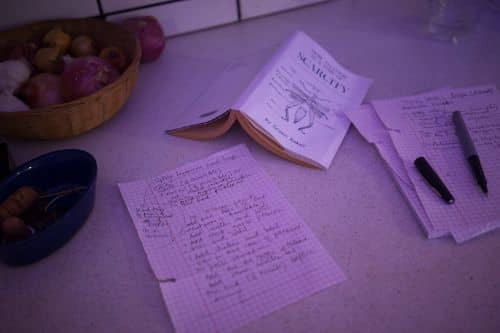

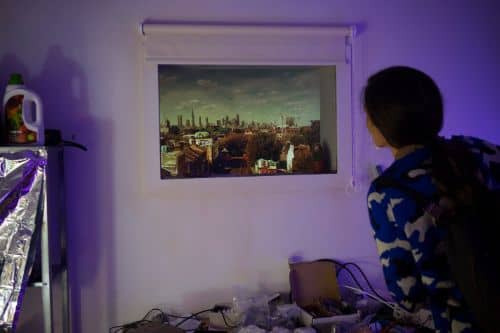
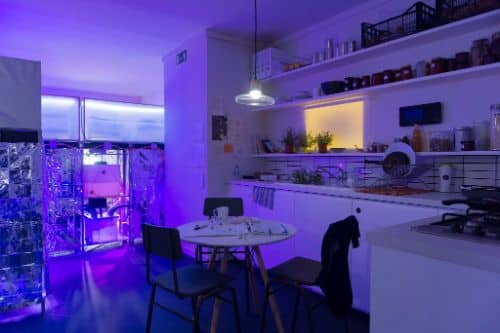
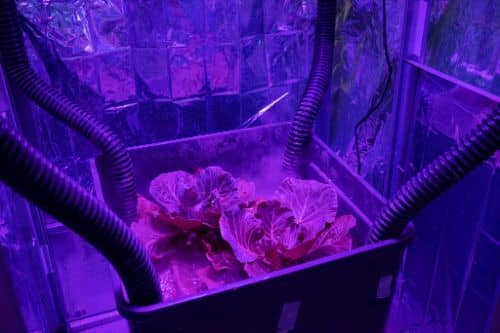
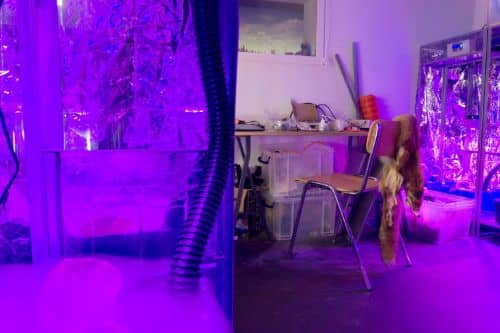

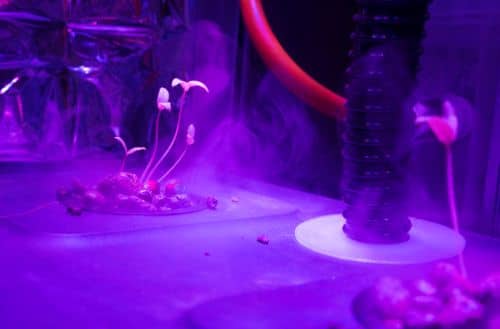
"This project on the Poetic Manufacture of Artificial Icebergs is the fruit of several ventures, something between fiction and a clear artistic stance, carried out simultaneously on the subject of polar ice melting and water, beyond the simple purview of the installation."
"The Poetic Manufacture of Artificial Icebergs project is directly part of the continuing research of the artist around the predicted disappearance of our glaciers. A blend of ironic fiction and imagined reality, this project poses the question of "repairing" our climate through the use of ever-advancing technology. This is an illusion kept alive on social media, the illusion that our lifestyle can still be maintained, if we believe the Googles and other assorted Amazons of the world...
The ironic thing is that, as we speak, oil syndicates are installing large refrigerated tubes into the Alaskan soil, in order to keep the permafrost solid and allow the exploitation of gas, mineral, and petroleum resources that are opening up at even greater distances "thanks to" climate change."
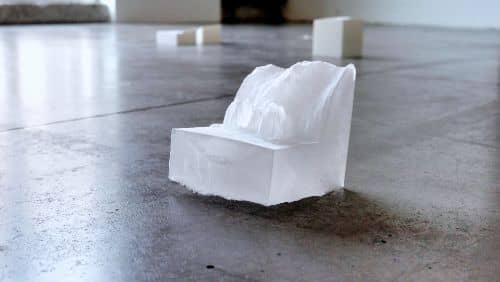

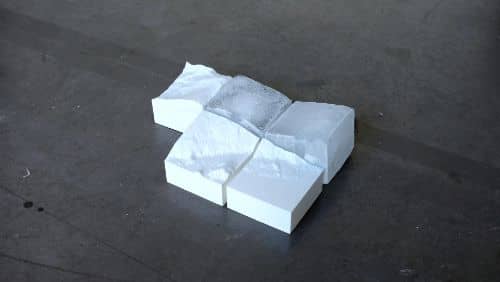
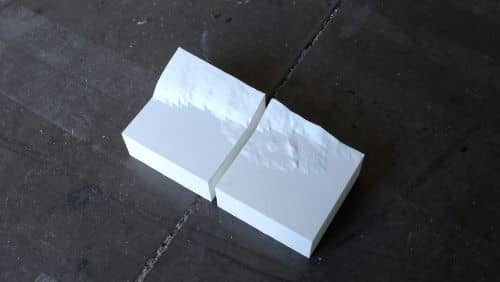

Further exploring the fictions that have shaped the imaginings of the past century shows us not only that truth is stranger than imaginary visions, but also that new futuristic themes have appeared in recent decades, despite all the changes the world has gone through.
Is it still wise to perpetuate the myth of conquering Mars, our fascination with mega-cities, or the worship of humanoid beings, when the planet is in danger and Earthlings are in search of a new destiny?
Who doesn’t feel torn by these paradoxes, whose solutions sometimes seem individually and collectively unsolvable?
Aren’t the promised apocalypses a consequence of these failed visions, or shouldn’t they at least encourage us to change course?
What alternatives do we have to look ahead to a brighter future than the one that seems to give us a date with doom?
We believe that other visions of the future exist or are waiting to be invented, and that we must keep utilizing all the performative power of storytelling to re-energize our modes of existence.
The last part of the exhibition is devoted to the crafting of desirable futures.